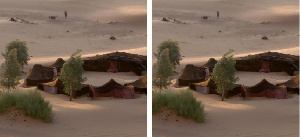Africa News of Tuesday, 2 May 2023
Source: face2faceafrica.com
The wonders of nature: How the Sahara desert could be larger than the USA
The Sahara Desert is growing in ways that make it compete in size with larger countries over time. Today, its coverage of the Northern part of Africa is larger than multiple states in the United States. This expansion in the land size of the desert is attributed to the decline in rainfall levels along the southern edge of the Sahara over a century now. Some of the once-green areas have been taken over by the desert.
This is backed by a study conducted by the National Science Foundation, funded scientists at the University of Maryland which revealed that the desert is expanding by about 10 percent since 1920. The work analyzed the rate and changes to the boundaries of the desert, which the researchers found were not only changing in form but expanding too.
The study, which was published in the Journal of Climate, cited the hot weather conditions and lesser rains in parts of the country that increase greenhouse emissions. Ming Cai, a program director in NSF’s Division of Atmospheric and Geospace Sciences, was worried these could have a dire impact on the lives of many Africans, who rely on agric for sustenance.
The conclusion of the research was derived from the data analysis of rainfall patterns throughout Africa from 1920 to 2013. It may not only be the changes in climate that have occasioned the state of the desert, but human activities as well. This has made the Sahara the world’s largest desert, equally in size to the United States, the study indicated further.
The possibility that the Sahara desert has a size larger than the US is based on how its boundaries keep changing with the passage of each season. It expands during the dry season, and contracts during the rainy season. Currently, this cycle accounts for about two-thirds of the total expansion of the desert. The remaining one-third can be placed squarely on human activities. However, the rains are not guaranteed because of the natural climate conditions in the Sahara and Sahel.
Researchers are hoping to understand the climate cycles of the desert better – what earlier research established was the trends in rainfall in the Sahara and Sahel. Researcher, Natalie Thomas, of UMD, lead author of the paper, said what they sought to do differently was to look at the extent to which these rainfall patterns have altered the boundaries of the desert.
This is because of its perceived impact on the future of the desert and other subtropical deserts. There is the need to either change or preserve the paradigm as the world population grows. In that light, the researchers hope to explain what is driving these trends in the future.
Entertainment










